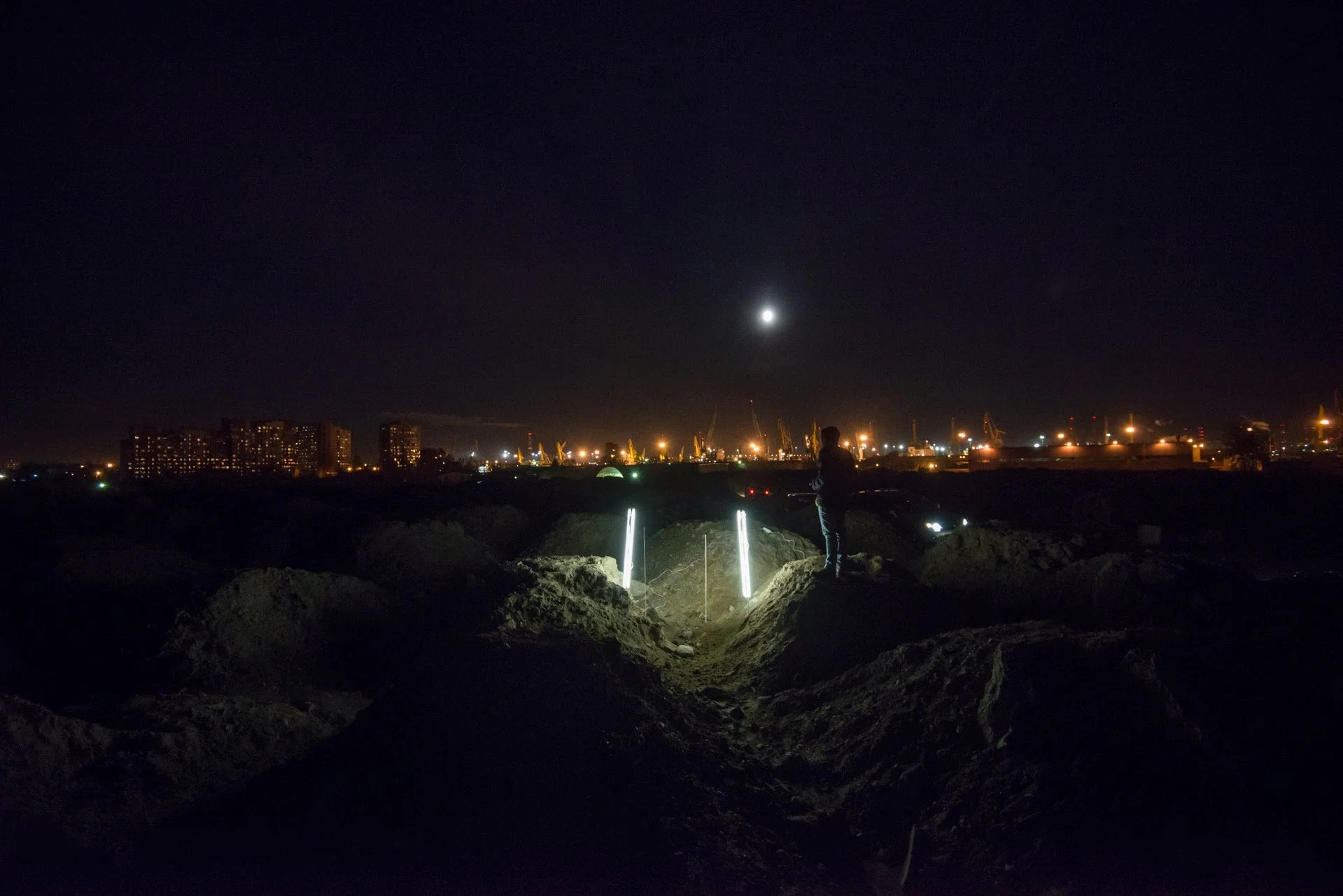
BLACKOUT COLLECTIVE
The Blackout group was formed by Valeria Lakrisenko and Alexander Belov in 2021. Blackout is our way of talking about nostalgia, longing and loss. We view memory as a landscape: sometimes it is a city, sometimes it is skin, sometimes it is a sheet of paper on which past routes are visible. We are drawn to things in which the past lingers longer than usual: to floor plans of houses we cannot return to; to alleys and paths we can no longer walk down; to the imprints of bodies on the edge of the bed, to the traces of those who have left. Surfaces become the relief of memory, and ‘floating,’ unreachable points on Google maps and photographs turn into rehearsals for future touches of what once was.
For us, longing is not only about migration and inaccessible places where return is impossible. It is also a craving for the topographies of dreams that cannot be entered, and for an impossible future where social and political structures have a different, revolutionary architecture. Sometimes it is a longing for a different sensibility or for a lost sense of belonging — for relationships that have not yet been invented.
We move between the archive and the field. Walking becomes a method, mapping a way of conversation, and the oral histories we collect become material for new forms. We talk to neighbours and strangers, listen to what hurts, and carefully return what we hear to the city space: in voice, image, text. The work is based on consent and trust; everyone has the right to pause and remain silent, and the materials are returned to those who gave them.
Media change along with the task. When we need air, we sing — “heretical fado” in which the voice does not so much illustrate loss as orient itself within it and pave the way forward. When recording is important, we take photographs and short videos that capture subtle gestures of absence, folds in fabric, cracks in the asphalt, shadows on the wall. When slow reflection is required, we draw and write — apartment plans turn into memory maps, courtyard diagrams and relationship charts come together in a private atlas. Text accompanies the image, sometimes arguing with it, sometimes whispering to the side.
All this is an attempt to turn the impossibility of return into the possibility of shared presence here and now. Personal memory takes on a common form when it can be sung, shown, redrawn, spoken aloud; when one person's route becomes another's route; when someone else's story is suddenly recognised as one's own.
At the Bottom of Nature — Vienna, Austria, 2025
Urban ecology as a partner: the audience gathers the city’s “seabed” traces and turns them into a living sound layer.
Language of Smoke — Vienna, Austria, 2025
A choreography of smoke and light signals about how communities speak when words are impossible.Trails on Ice — Vienna, Austria, 2024
A walk-performance: chalk-marked paths slowly melt, revealing the fragility of footing and memory.Witch’s Fado — outskirts of Sintra, Portugal, 2024
A nocturnal vocal ritual by the cliffs: fado as a spell to return voice to place and body.Meltemi Letter — Athens, Greece, 2022
The wind as co-author: a letter-performance the meltemi writes, tears apart, and reassembles before the audience.Lament for a Well — Mediterranean coast, Montenegro, 2022
Voices and clay vessels resonate with water, drawing forgotten shoreline stories to the surface.

















